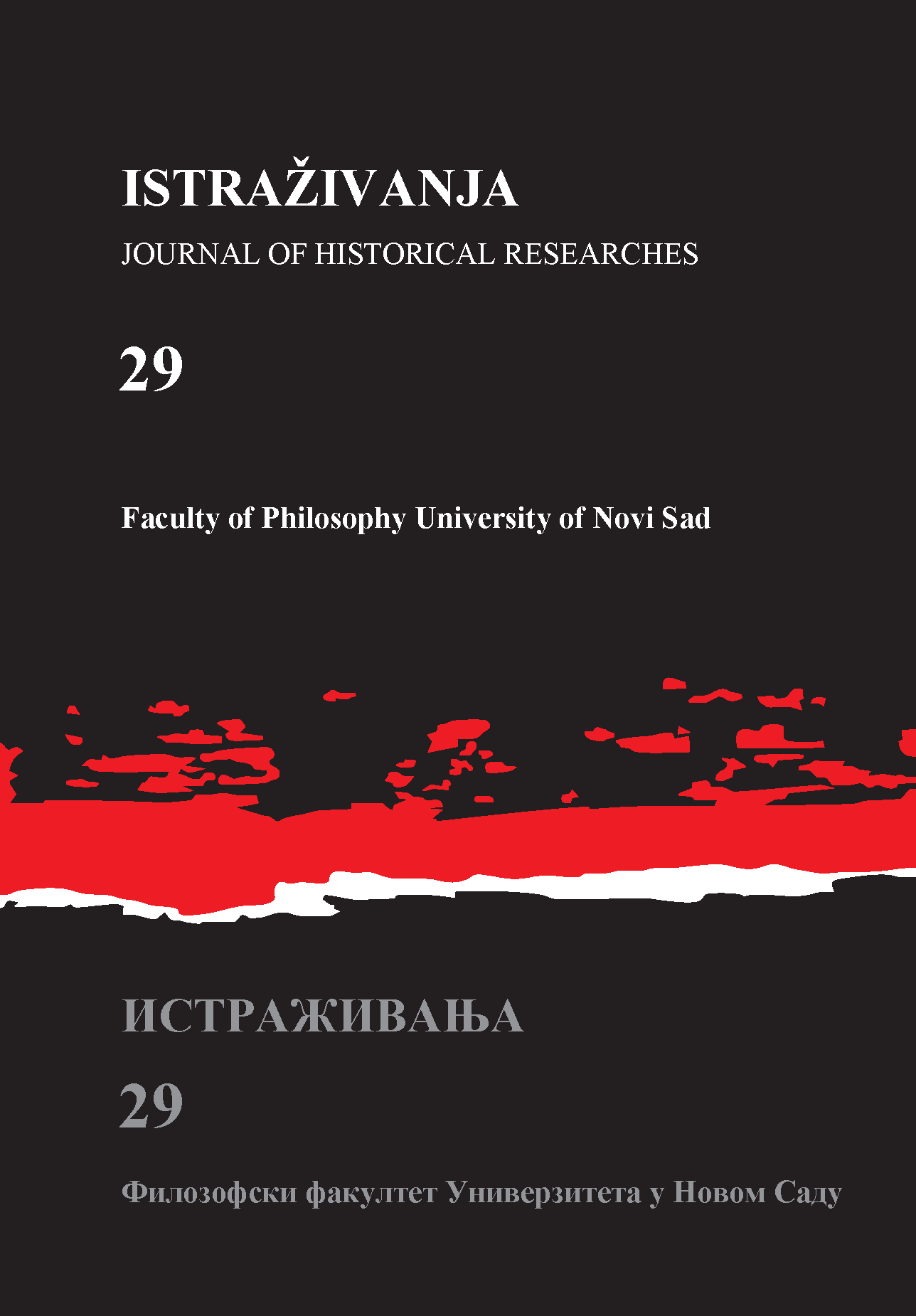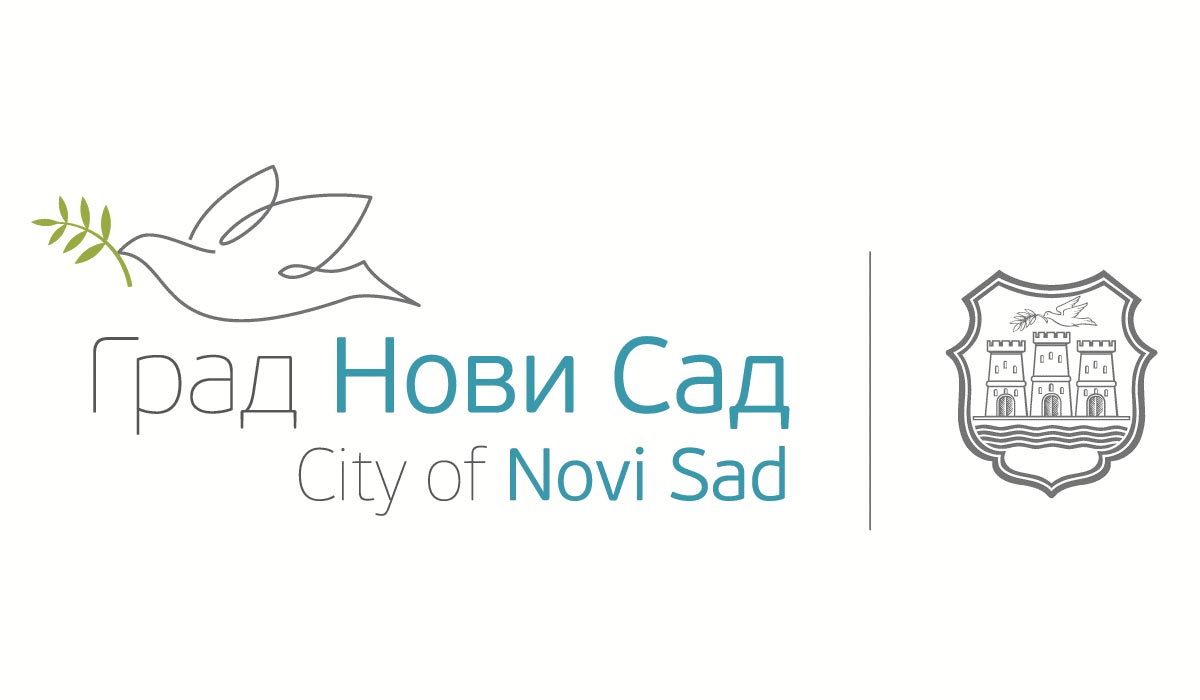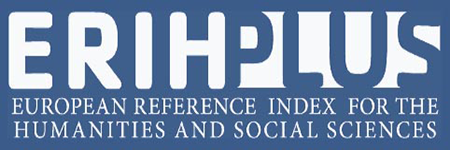RELIGIOUS AGENCY, SACRALISATION AND TRADITION IN THE ANCIENT CITY
DOI:
https://doi.org/10.19090/i.2018.29.22-38Keywords:
religious agency, sacralisation, urban religion, tradition, canonAbstract
Starting from a discussion against the notions of a unified ‘public religion’ my focus during the past decade has been on ‘religious individualization’ and the fluidity of religion captured by the concepts of ‘lived ancient religion’ and ‘religion in the making’. These concepts focus on the inherent dynamic qualities of those cultural products that I identify as religion in the course of historical analyses. And yet, the undeniable presence of traditions and even canones can be conceptualized beyond a world of individually fragmented religious practices and beliefs and incipient, ever-changing and also dissolving institutions that would be clustered together only in the form of narrative shorthand terms by historians. The paper offers a theoretical reflection on a concept of religion useful for the question of tradition and canonization, building on earlier proposals and developing those further by developing the notion of sacralisation. This will be framed by an historical assumption, namely that the processes of interest here are pushed in urban contexts. Here, my focus will be on the ancient Mediterranean.
Downloads
References
Ammerman, N. T. ʻGolden Rule Christianity: Lived Religion in the American Mainstreamʼ, in D. D. Hall (ed.), Lived Religion in America: Toward a History of Practice, Princeton: Princeton University, 1997, 196-216.
Ando, C. ʻThe Palladium and the Pentateuch: towards a sacred topography of the later Roman empireʼ, Phoenix, 55, 2001, 369-411.
______. Law, Language, and Empire in the Roman Tradition, Philadelphia: University of Pennsylvania Press, 2011.
______. Roman social imaginaries: Language and thought in contexts of empire, The Robson classical lectures, Toronto: University of Toronto Press, 2015.
Appadurai, A. ʻThe Capacity to Aspire: Culture and the Terms of Recognitionʼ, in V. Rao and J. M. Walton (eds.), Culture and Public Action, Palo Alto: Stanford University Press, 2004, 59-84.
Arnhold, M. ʻSanctuaries and Urban Spatial Settings in Roman Imperial Ostiaʼ, in R. Raja and J. Rüpke (eds.), A Companion to the Archaeology of Religion in the Ancient World, Malden, Wiley, 2015, 293-303.
Assmann, A. and Assmann, J. (eds.) Kanon und Zensur, Archäologie der literarischen Kommunikation 2. München: Fink, 1987.
Auffarth, C. ʻGaben für die Götter - für die Katz? Wirtschaftliche Aspekte des griechischen Götterkults am Beispiel Argosʼ, in H. G. Kippenberg and B. Luchesi (eds.), Lokale Religionsgeschichte, Marburg: diagonal, 1995, 259-272.
Becci, I. and Burchardt, M. ʻIntroduction: Religon Takes Place: Producing Urban Localityʼ, in I. Becci, M. Burchardt and J. Casanova (eds.), Topographies of Faith: Religion in Urban Spaces, Leiden: Brill, 2013, 1-21.
Becker, E.-M. ʻAntike Textsammlungen in Konstruktion und Dekonstruktion: Eine Darstellung aus neutestamentlicher Sichtʼ, in E.-M. Becker and S. Scholz (eds.), Kanon in Konstruktion und Dekonstruktion: Kanonisierungsprozesse religiöser Texte von der Antike bis zur Gegenwart, Ein Handbuch. Berlin: de Gruyter, 2012a, 1-29.
______. ʻLiterarisierung und Kanonisierung im frühen Christentum: Einführende Überlegungen zur Entstehung und Bedeutung des neutestamentlichen Kanonsʼ, in E.-M. Becker and S. Scholz (eds.), Kanon in Konstruktion und Dekonstruktion: Kanonisierungsprozesse religiöser Texte von der Antike bis zur Gegenwart. Ein Handbuch, Berlin: de Gruyter, 2012b, 389-397.
Bell, C. Ritual Theory, Ritual Practice, New York: Oxford University Press, 1992.
Bellah, R. N. Religion in Human Evolution: From the paleolithic to the Axial Age, Cambridge, Mass.: Harvard Univ. Press, 2011.
Bendlin, A. ʻVatesʼ, Der Neue Pauly, 12 (2), 2002, 1150-1151.
______. ʻOn the Uses and Disadvantages of Divination: Oracles and their Literary Representations in the Time of the Second Sophisticʼ, in J. A. North and S. R. F. Price (eds.), The Religious History of the Roman Empire: Pagans, Jews, and Christians, Oxford: Oxford University Press, 2011, 175-250.
Bernabé Pajares, A. Instructions for the Netherworld: the orphic gold tablets, Religions in the Graeco-Roman world 162, Leiden: Brill, 2008
Bernstein, F. ʻComplex rituals: Games and processions in Republican Romeʼ, in J. Rüpke (ed.), A Companion to Roman Religion, Oxford: Blackwell, 2007, 222-234.
Blum, A. The imaginative structure of the city, Montreal: McGill-Queen's University Press, 2003.
Bowern, C. and Evans, B. The Routledge handbook of historical linguistics. Routledge handbooks in linguistics, London: Routledge, 2015.
Bremmer, J. N. ʻThe Construction of an Individual Eschatology: The Case of the Orphic Gold Leavesʼ, in K. Waldner, R. Gordon and W. Spickermann (eds.), Burial Rituals, Ideas of Afterlife, and the Individual in the Hellenistic World and the Roman Empire, Potsdamer altertumswissenschaftliche Beiträge, 57, Stuttgart: Steiner, 2016, 31-51.
Brinton, L. J. English historical linguistics. Approaches and perspectives, Cambridge: Cambridge University Press, 2017.
Burchardt, M. and Wohlrab-Sahr, M. ʻ„Multiple Secularities: Religion and Modernity in the Global Age‟ – Introductionʼ, International Sociology, 28 (6), 2013, 605-611.
Burkert, W. Griechische Religion der archaischen und klassischen Epoche, Die Religionen der Menschheit 15, Stuttgart: Kohlhammer, 2011.
Cancik, H. ʻRome as Sacred Landscape: Varro and the End of Republican Religion in Romeʼ, Visible Religion, 4 (5), 1985, 250-265.
______. ʻKanon, Ritus, Ritual - Religionsgeschichtliche Anmerkungen zu einem literaturwissenschaftlichen Diskursʼ, in M. Moog-Grünewald (ed.), Kanon und Theorie, Heidelberg: Winter, 1997, 1-19.
Caseau, B. ʻSacred Landscapesʼ, in G. W. Bowersock, P. Brown and O. Grabar (eds.), Late Antiquity: A Guide to the postclassical World, Cambridge u. a.: Belknap Press, 1999, 21-59.
Casevitz, M. ʻLes notions de profane et de sacré dans le vocabulaire grec: Sont-elles opératoires?ʼ, in É. Rebillard and C. Sotinel (eds.), Les frontières du profane dans l'antiquité tardive, Collection de l'école francaise de Rome 428, Rome: Ecole Française de Rome, 2010, 17-20.
Ceccarelli, L. ʻReligious Landscape. A case - study from Latium Vetusʼ, in M. L. D. M. a. D. F. O. Menozzi (ed.), SOMA 2005: Proceedings of the IX Symposium on Mediterranean Arcaeology Chieti (italy), 24 - 26 February 2005, Oxford: BAR International Series 1739, 2008,333 - 339.
Chaniotis, A. ʻProcessions in Hellenistic cities. Contemporary discourses and ritual dynamicsʼ, in R. Alston, O. M. Van Nijf and C. G. Williamson (eds.), Cults, Creeds and Identities in the Greek City after the Classical Age, Groningen-Royal Holloway Studies on the Greek City after the Classical Age, Leuven; Paris; Walpole, Ma: Peeters, 2013, 42-43 (chapter 21-48).
Citroni, M. ʻThe Concept of the Classical and the Canons of Model Authors in Roman Literatureʼ, in J. I. Porter (ed.), Classical pasts: the classical traditions of Greece and Rome, Princeton, NJ Princeton University Press, 2006, 204-234.
Connor, W. R. ʻTribes, Festivals and Processions: Civic ceremonial and political manipulation in archaic Greeceʼ, Journal of Hellenic Studies, 107, 1987, 40-50.
Cunliffe, B. and Keay, S. (eds.) Social Complexity and the Development of Towns in Iberia from the Copper Age to the Second Century, Oxford: University Press, 1995.
de Cazanove, O. ʻI destinatari dell'iscrizione di Tiriolo e la questione de campo d'applicazione del senatoconsulto De Bacchanalibusʼ, Athenaeum, 88, 2000, 59-69.
Deuser, H. ʻ„A feeling of objective presence‟: Rudolf Ottos Das heilige und William James' Pragmatismus zum Vergleichʼ, in J. Lauster, P. Schüz, R. Barth and C. Danz (eds.), Rudolf Otto: Theologie - Religionsphilosophie – Religionsgeschichte, Berlin de Gruyter, 2014, 319-333.
Dey, H. ʻUrban Armatures, Urban Vignettes: The Interpermeation of the Reality and the Ideal of the Late Antique Metropolisʼ, in S. Birk, T. M. Kristensen and B. Poulsen (eds.), Using Images in Late Antiquity, Oxford: Oxbow, 2014, 190-208.
Dupont, F. L'acteur-roi: le théatre dans la Rome antique, Paris: Belles Lettres, 1986.
Edmonds III, R. G. Redefining Ancient Orphism: A Study in Greek Religion, Cambridge: Cambridge University Press, 2013.
Edmonds, R. G. (ed.) The „Orphic‟ gold tablets and Greek religion: further along the path. Cambridge [u.a.]: Cambridge Univ. Press, 2011.
Eliade, M. The sacred and the profane the nature of religion: The significance of religious myth, symbolism, and ritual within life and culture, Harper torchbooks 81, New York: Harper & Brothers, 1961.
Filppula, M., Klemola, J., Mauranen, A. and Vetchinnikova, S. Changing English. Global and local perspectives, Topics in English linguistics; volume 92, Berlin: De Gruyter Mouton 2017.
Fish, S. E. Professional correctness: Literary studies and political change, Oxford: Clarendon Press, 1995.
Fless, F. and Moede, K. ʻMusic and Dance: Forms of Representation in Pictorial and Written Sourcesʼ, in J. Rüpke (ed.), A Companion to Roman Religion, Oxford: Blackwell, 2007, 249-262.
Flower, H. I. ʻRereading the Senatus Consultum de Bacchanalibus of 186 BC: Gender Roles in the Roman Middle Republicʼ, in V. B. Gorman and E. W. Robinson (eds.), Oikistes: Studies in Constitutions, Colonies, and Military Power in the Ancient World. Offeres in Honor of A.J. Graham, Leiden: Brill, 2002, 79-98.
Folkert, K. W. ʻThe „Canons‟ of „Scripture‟ʼ, in M. Levering (ed.), Rethinking Scripture: Essays from a Comparative Perspective, New York: State University of New York Press, 1989, 170-179.
Fustel de Coulanges, N. D. La cité antique, étude sur le culte, le droit, les institutions de la Grèce et de Rome, Paris, Strasbourg, 1864.
______. The ancient city. A study on the religion, laws, and institutions of Greece and Rome, Garden City [u.a.]: Doubleday Anchor Books, 1956.
Goh, D. P. S. and van der Veer, P. ʻIntroduction: The sacred and the urban in Asiaʼ, International Sociology, 31 (4), 2016, 367-374.
Goldberg, S. ʻComedy and society from Menander to Terenceʼ, in M. McDonald and J. M. Walton (eds.), The Cambridge companion to Greek and Roman theatre, Cambridge [u.a.]: Cambridge Univ. Press, 2007, 124-138.
Guthrie, W. K. Orpheus and Greek Religion: A Study of the Orphic Movement, New York: Norton, 1966.
Habinek, T. The Politics of Latin Literature: Writing, identity, and Empire in Ancient Rome, Princeton: University Press, 1998.
Habinek, T. N. and Schiesaro, A. (eds.) The Roman Cultural Revolution. Cambridge: University Press, 1997.
Hahn, A. ʻKanonisierungsstileʼ, in A. Assmann and J. Assmann (eds.), Kanon und Zensur, Beiträge zur Archäologie der literarischen Kommunikation 2, München: Fink, 1987, 28-37.
Hahn, J. From Temple to Church: Descruction and Renewal of Local Cultic Topography in Late Antiquity, Leiden: Brill, 2008.
Hall, D. D. ʻIntroductionʼ, in D. D. Hall (ed.), Princeton: Princeton University Press, 1997, VII-XIII.
Jackson, P. 'The Arrival of the Clients: Technologies of Fame and the Prehistory of Orphic Eschatology', Historia Religionum, 8, 2016, 169-194.
Jacobs, A. ʻTemples and Civic Representation in the Theodosian Periodʼ, in S. Birk, T. M. Kristensen and B. Poulsen (eds.), Using Images in Late Antiquity, Oxford: Oxbow, 2014, 132-149.
Joas, H. Die Kreativität des Handelns, Frankfurt a. M.: Suhrkamp, 1996.
______. Die Macht des Heiligen: Eine Alternative zur Geschichte von der Entzauberung, Frankfurt a. M.: Suhrkamp, 2017.
Jung, M. ʻ„Making us explicit‟: Artikulation als Organisationsprinzip von Erfahrungʼ, in Anthropologie der Artikulation: Begriffliche Grundlagen und transdiziplinäre Perspektiven, Würzburg: Königshausen and Neumann 2005, 103-141.
Keller, R. On language change: The invisible hand in language, London: Routledge, 1994.
Klostergaard Petersen, A. ʻ„Invention‟ and „Maintenance‟ of Religious Traditions: Theoretical and Historical Perspectivesʼ, in Jörg Ulrich, Anders-Christian Jacobsen and D. Brakke (eds.), Invention, Rewriting, Usurpation - Discursive Fights over Religious Traditions in Antiquity, 11. Early Christianity In The Context Of Antiquity, Frankfurt am Main: Peter Lang, 2012,129 - 160.
Knott, K., Krech, V. and Meyer, B. ʻIconic Religion in Urban Spaceʼ, Material Religion, 12 (2), 2016, 123-136.
Kolb, F. Die Stadt im Altertum, München: Beck, 1984.
Law, D., Haicheng, W., Nissen, H. J. and Urton, G. ʻWriting and record-keeping in early citiesʼ, in N. Yoffee (ed.), The Cambridge world history 3: Early cities in comparative perspective, 4000 BCE-1200 CE, Cambridge: Cambridge Univ. Press, 2015, 207-225.
Lefebvre, H. La production de l'espace. Collection société et urbanisme, Paris: Éd. Anthropos, 1974.
Linders, T. and Nordquist, G. (eds.) Gifts to the Gods: Proceedings of the Uppsala Symposium 1985, Acta Universitatis Upsaliensis: Boreas 15, Uppsala: Universitet, 1987.
Löw, M. Soziologie der Städte, Frankfurt am Main: Suhrkamp, 2008.
______. Sociology of space. Materiality, social structures, and action, Cultural sociology, New York: Palgrave Macmillan, 2016.
MacCormack, S. G. ʻLoca sancta: the organization of sacred topography in late antiquityʼ, in R. Ousterhout (ed.), The blessings of pilgrimage, 1990, 7-40.
Manderscheid, K. Milieu, Urbanität und Raum: Soziale Prägung und Wirkung städtebaulicher Leitbilder und gebauter Räume, Wiesbaden: VS Verlag für Sozialwissenschaften, 2004.
Mann, M. The sources of social power 1: A history of power from the beginning to A. D. 1760, Cambrigde: UP, 1986.
Manuwald, G. Roman republican theatre, Cambridge: Cambridge Univ. Press, 2011.
McGuire, M. B. Lived Religion: Faith and Practice in Everyday Life, Oxford: Oxford University Press, 2008.
Momigliano, A. ʻFrom the Pagan to the Christian Sibyl: Prophecy as History of Religionʼ, Nono contributo alla storia degli studi classici e del mondo antico, 1992, 725-744.
Obbink, D. ʻCosmology as Initiation vs. the Critique of Orphic Mysteriesʼ, in Studies on the Derveni Papyrus, Oxford: Clarendon Press, 1997, 39-54.
Orsi, R. A. ʻEveryday Miracles: The Study of Lived Religionʼ, in D. D. Hall (ed.), Lived Religion in America: Toward a History of Practice, Princeton: Princeton University Press, 1997, 3-21.
Otto, R. Das Heilige: Über das Irrationale in der Idee des Göttlichen und sein Verhältnis zum Rationalen, Breslau: Trewendt u. Granier, 1917.
Otto, R. Das Heilige: Über das Irrationale in der Idee des Göttlichen und sein Verhältnis zum Rationalen. Mit einer Einf. zu Leben und Werk Rudolf Ottos von Jörg Lauster und Peter Schüz und einem Nachw. von Hans Joas, Beck'sche Reihe 328, München: Beck, 2014.
Pailler, J.-M. Bacchanalia: La répression de 186 av. J.-C. à Rome et en italie: vestiges, images, tradition, Bibliothèque des écoles françaises d'Athène et de rome 270, Rome: École Française, 1988.
Patzelt, M. Über das Beten der Römer: Gebete im spätrepublikanischen und frühkaiserzeitlichen Rom als Ausdruck gelebter Religion, RGVV, 73, Berlin: deGruyter, 2018.
Peirce, C. S. Semiotische Schriften, Frankfurt am Main: Suhrkamp, 1986.
______. Peirce on signs: Writings on semiotic, Chapel Hill, NC: Univ. of North Carolina Press, 1991.
Potter, D. S. Prophecy and History in the Crisis of the Roman Empire: A Historical Commentary on the Thirteenth Sibylline Oracle, Oxford Classical Monographs, Oxford: Clarendon, 1990.
Rüpke, J. ʻCommunicating with the Godsʼ, in R. Morstein-Marx and N. Rosenstein (eds.), The Blackwell Companion to the Roman Republic, Oxford: Blackwell, 2006, 215-235.
______. ʻReligion medialʼ, in J. Malik, J. Rüpke and T. Wobbe (eds.), Religion und Medien: Vom Kultbild zum Internetritual, Vorlesungen des Interdisziplinären Forums Religion der Universität Erfurt 4, Münster: Aschendorff, 2007a, 19-28.
______. Religion of the Romans, Cambridge: Polity Press, 2007b.
______. ʻAntiquar und Theologe: systematisierende Beschreibung römischer Religion bei Varroʼ, in A. Bendlin and J. Rüpke (eds.), Römische Religion im historischen Wandel, Tübingen: Mohr Siebeck, 2009, 73-88.
______. The Roman Calendar from Numa to Constantine: Time, History and the Fasti, Malden, MA: Wiley-Blackwell, 2011.
______. Religion in Republican Rome: Rationalization and Ritual change, Philadelphia: University of Pennsylvania Press, 2012.
______. ʻWas ist ein Heiligtum? Pluralität als Gegenstand der Religionswissenschaftʼ, in A. Adogame, M. Echtler and O. Freiberger (eds.), Alternative Voices: A Plurality Approach for Religious Studies. Essays in Honor of Ulrich Berner, Critical Studies in Religion/Religionswissenschaft 4, Göttingen: Vandenhoeck & Ruprecht, 2013, 211-225.
______. ʻReligious Agency, Identity, and Communication: Reflecting on History and Theory of Religionʼ, Religion, 45 (3), 2015, 344-366.
______. ʻKnowledge of Religion in Valerius Maximus’ Exempla: Roman Historiography and Tiberian Memory Cultureʼ, in K. Galinsky (ed.), Memory in Ancient Romne and Early Christianity, Oxford: Oxford University Press, 2016a, 89-111.
______. On Roman Religion: Lived Religion and the Individual in Ancient Rome, Townsend Lectures/Cornell studies in classical philology, Ithaca, NY: Cornell University Press, 2016b.
______. Religious Deviance in the Roman World: Superstition or Individuality, Cambridge: Cambridge University Press, 2016c.
______. ʻCrafting complex place: Religion, antiquarianism, and urban development in late republican Romeʼ, Historia Religionum, 9, 2017, 109-117.
______. ʻGifts, votives, and sacred things: Strategies, not entitiesʼ, Religion in the Roman Empire, 4 (2), 2018a, 207-236.
______. Pantheon: A New History of Roman Religion, Princeton: Princeton University Press, 2018b.
Scheid, J. An introduction to Roman religion, Edinburgh: Edinburgh Univ. Press, 2003.
Sear, F. Roman theatres: An architectural study, Oxford: Oxford Univ. Press, 2006.
Simmel, G. ʻIndividualismusʼ, Marsyas, 1, 1917, 33-39.
Sinopoli, C. M. ʻAncient South Asian cities in their regionsʼ, in N. Yoffee (ed.), The Cambridge world history 3: Early cities in comparative perspective, 4000 BCE-1200 CE, Cambridge: Cambridge Univ. Press, 2015, 319-342.
Smith, M. E., Dennehy, T., Kamp-Whittaker, A., Stanley, B. W., Stark, B. L. and York, A. ʻConceptual approaches to service provision in cities throughout historyʼ, Urban Studies, 2015, 1-17.
Smith, M. L. ʻIntroduction: The social construction of ancient citiesʼ, in M. L. Smith (ed.), The social construction of ancient cities, Washington: Smithonian Books, 2003, 1-36.
Soja, E. W. Postmetropolis: Critical studies of cities and regions, Oxford: Blackwell Publishers, 2000.
Stavrianopoulou, E. ʻThe Archaeology of Processionsʼ, in R. Raja and J. Rüpke (eds.), A Companion to the Archaeology of Religion in the Ancient World, Malden: Wiley, 2015, 349-360.
Steinsapir, A. I. Rural sanctuaries in Roman Syria. The creation of a sacred landscape, BAR international series; 1431, Oxford: Hedges, 2005.
Storper, M. The regional world: Territorial development in a global economy, Perspectives on economic change, New York: Guilford Press, 1997.
Thomassen, E. Canon and Canonicity: the formation and use of scripture, Copenhagen: Museum Tusculanum Press, 2010.
Urban, H. B. ʻSacred Capital: Pierre Bourdieu and the Study of Religionʼ, Method & Theory in the Study of Religion, 15 (4), 2003, 354-389.
Van Andringa, W. ʻThe Archaeology of Ancient Sanctuariesʼ, in R. Raja and J. Rüpke (eds.), A Companion to the Archaeology of Religion in the Ancient World, Malden: Wiley, 2015, 29-40.
van Straten, F. T. ʻGifts for the Godsʼ, in H. S. Versnel (ed.), Faith, Hope and Worship: Aspects of Religious Mentality in the Ancient World, Leiden: Brill, 1981, 65-151.
Veer, P. v. d. Handbook of religion and the Asian city. Aspiration and urbanization in the twenty-first century, Oakland, Calif.: Univ. of California Press, 2015.
Wallace-Hadrill, A. ʻMutatio morum: The idea of a cultural revolutionʼ, in T. N. Habinek and A. Schiesaro (eds.), The Roman Cultural Revolution, Cambridge: University Press, 1997, 3-22.
______. Rome's Cultural Revolution. Cambridge: Cambridge University Press, 2008.
Wallraff, M. Kodex und Kanon: Das Buch im frühen Christentum, Hans-Lietzmann-Vorlesungen 12, Berlin: de Gruyter, 2013.
Whitehead, A. N. Religion in the making, Lowell lectures, New York: Macmillan, 1926.
______. Wie entsteht Religion?, Suhrkamp-Taschenbuch Wissenschaft, 847, Frankfurt am Main: Suhrkamp, 1990.
Wirth, L. ʻUrbanism As A Way of Lifeʼ, American Journal of Sociology, 44, 1938, 1-24.
______. Louis Wirth on cities and social life: Selected papers, The Heritage of sociology, Chicago: University of Chicago Press, 1964.
Wiseman, T. P. ʻLucretius, Catiline, and the Survival of Prophecyʼ, in T. P. Wiseman (ed.), Historiography and imagination: eight essays on Roman culture, Exeter: University of Exeter Press, 1992, 49-67.
Yoffee, N. The Cambridge world history 3: Early cities in comparative perspective, 4000 BCE-1200 CE, Cambridge: Cambridge Univ. Press, 2015.
Yoffee, N. and Terrenato, N. ʻIntroduction: a history of the study of early citiesʼ, in N. Yoffee (ed.), The Cambridge world history 3: Early cities in comparative perspective, 4000 BCE-1200 CE, Cambridge: Cambridge Univ. Press, 2015, 1-24.
Zuiderhoek, A. The ancient city. Key themes in ancient history, Cambridge: Cambridge University Press, 2017.














